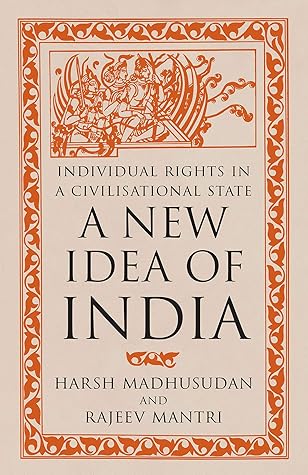More on this book
Community
Kindle Notes & Highlights
Read between
April 14 - April 14, 2022
In 2014, India had two mobile phone manufacturing facilities, and by 2018 the number had increased to 268.104
India’s problem is having ‘State flab’ in the wrong places in the government and no muscle in areas that matter.
As for police forces across the country, over five lakh posts are vacant, with the highest—around 1.80 lakh—being in Uttar Pradesh.
Economist Sanjeev Sanyal has opined that India needs a ‘Transparency of Rules Act’ so that all rules and procedures are notified in real time on the website of the relevant government agency or department, in one coherent document, rather than as a series of circulars.
The issue right now is that the State has locked up all the information by default and doles out some information only to those who are persistent and curious. It’s a typically bureaucratic way of ushering in transparency—in theory, but not in practice.
Barack Obama’s administration had decided to make most data collected by the government available to the American public for free, and that too in a machine-readable format by default.
Vouchers allow poor students options beyond the free government school by compensating them if they want to attend a private school instead.
That school vouchers are yet to gain endorsement from India’s intellectual establishment is extremely unfortunate and detrimental to the future of tens of millions of children.
A study by the Institute of International Education reveals that over 186,000 Indian students were studying in the US in 2017. By 2019 the number of Indian students in the US was more than 200,000.55
The other error made by Indian policy-makers was to cleave research from teaching. Creative ideas and breakthrough advances often come from the combination of young minds and experienced scholars studying and researching together.
The PFIP Bill, modelled on the American Bayh-Dole Act of 1980 that has been described as ‘innovation’s golden goose’,57 aimed to catalyse commercialisation of publicly funded research and creation of incentives for technology entrepreneurship in academia. The Bill was withdrawn in 2014, but there is a strong case for reviving it and for changing it as needed.
What India needs is a marketplace of ideas, and like any market, one certainly cannot expect the incumbent force (that is, the Indian left-wing) to willingly cede space to new entrants.
The State should stop trying to force qualified doctors to perform compulsory rural service and instead encourage medical colleges to start shorter training programmes to equip practitioners in providing basic care.
To further augment healthcare based on government subsidies but through viable market incentives, it would be useful to learn from the Singaporean example of medical or health savings accounts (HSAs).
There will always be a component of direct government spending on primary healthcare, immunisation and sanitation, as they have significant positive externalities. But when it comes to personal healthcare services, India should unabashedly combine private competition with targeted public subsidies.
Passed by both houses of Parliament, ratified by sixteen state legislatures and finally assented to by the President of India,95 this historic bipartisan, herculean effort was undone by the five-judge bench which termed the 99th constitutional amendment establishing NJAC as unconstitutional.
The Basic Structure doctrine has, in effect, not upheld the supremacy of the Constitution. What it has upheld in effect, is the supremacy of the judiciary and that has evidenced itself in various judgments in the following years. The Court has repeatedly ballooned the contours of the Basic Structure using the certificate of authority given to it by Kesavananda Bharati, and in the process, imposed upon the people of India its own morality and ideology from time to time.
The Supreme Court has gifted to itself the so-called Collegium system in which the topmost judges themselves appoint their colleagues to serve in constitutional courts.
Arbitrary judgments on PILs as well as other cases before the higher courts have caused severe economic damage. The Supreme Court has been pronouncing on and deciding how a private sports body like the Board of Control for Cricket in India should be run.
If any organ of the state is not doing its duty, it can be directed to do its duty. Usurpation of power … by any other organ would never be the correct constitutional approach.
The interesting question is, what exactly is ‘constitutional morality’ and how often does it change?


